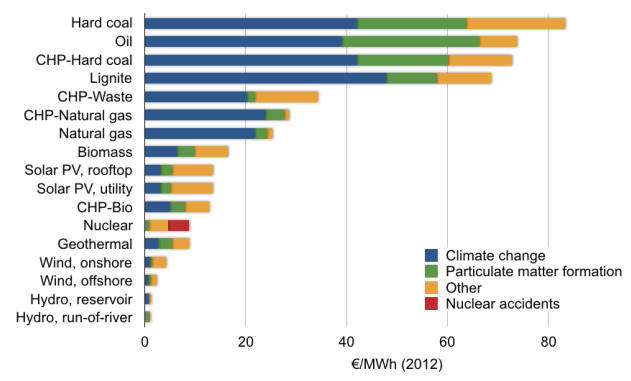What is ‘your agenda’ - I must have missed it in all the excitement …

What is ‘your agenda’ - I must have missed it in all the excitement …

Nobody expects the Spanish Inquisition! Re ‘my agenda’ I think I must have misplaced it as I do not seem to have one.



I beg to differ, and here are some examples of renewable inclusion in the evidence.
While, at this moment, there may not be an official consensus on the efficacy of nuclear, it is naive to totally sweep away the amounting evidence that disproves your fears. Consensus is sought through evidence acquisition, not dismissal.
I’d encourage you to read through the two evidence-based articles as they address the myths you and some other forum members expressed.
Have a good day ![]()
Quoting a single word that when expanded matches random parts of a whole post (example “of”) probably sends the wrong message to us bystanders about whether it is worth sifting through it all to see if there is something worthwhile … just a thought …
You have a mix of technology, economics, and construction data. The bottom line for many of us is the spent fuel storage problem and the chance for a melt down or catastrophe brought on by nature or man are deciding factors. We are not going to sway each other, but the bulk of modern ‘new generation’ coming online seems to be ‘not nuclear’ and ‘not coal’.
I did not check the veracity, but
There are other sites counting the nuclear and coal projects underway, and there appear to be a few score of them so I accept the subject is debatable or even arguable.
The point that @PhilT made in the comment to which you responded was that anyone can (and does) write blog posts; that does not mean they are an expert, nor that they have considered all available information on the matter. It is not a question of having to identify individual errors or broad oversimplifications, it is a question of the author’s qualifications to make the claims they make.
The fact that Iida Ruishalme is a biologist does not make her an expert on nuclear energy. Yes, she has written a long article discussing why she thinks ‘nuclear is the answer’ - but has she considered all perspectives? Just as importantly, can she explain why so many countries are running in the other direction?
Yes, burning dinosaur batteries is a bad way of generating electricity. That does not mean colliding atoms to split them and thus boil water to turn a turbine is a good way of generating electricity, or the only alternative. As technology currently stands, nuclear fission is not only an incredibly risky process, it produces some incredibly dangerous by-products that we cannot get rid of and will hang around for millennia. If fusion was a viable option, then no doubt many more people would be jumping onto the nuclear band-wagon - but so far all attempts to make it cost-effective have failed.
I don’t think anyone here is saying that we should entirely dismiss any particular energy option out of hand; instead, we are saying that there is a lot of evidence that says nuclear power generation is going the way of dinosaur batteries - for good reason.
Finally, I see you have posted an interesting graph titled ‘Materials Throughput for Each Energy Source’. Unfortunately, this appears not to say anything about materials handling requirements - and solar panels do not need to be buried in metres of cement to ensure passers-by are safe from radiation poisoning. In other words, materials are not all equal - input- or output-wise. I also see from the website that came from that “EP is working with scientists, conservationists and citizens around the world to defend our largest source of clean energy, nuclear power.” Not entirely unbiased in their thinking, one suspects - although I have not taken a deeper dive to see their funding sources and so forth. (Yes, I can read the claims of independence from bias as well as I can read political campaign pamphlets.)
Unfortunately the format and lack of context makes this post look like a graph Gish Gallop (which should have its own term!)
[quote=“jen, post:159, topic:14728”]
the format and lack of context makes this post look like a graph Gish Gallop (which should have its own term!)
[/quote]It’s still a Gish Gallop. Just a pretty one.
“The strength of the Gish Gallop is in its ability to create the appearance of authority and control. The Galloper frames the debate and forces opponents to respond on their terms. The Galloper wins by making the point that their opponents have failed to disprove their arguments sufficiently or completely enough for their satisfaction.”
The Gallop is a tactic employed by those who have no argument, but want to convince themselves that they’ve won. In this case, the galloper loses as soon as the reader looks back on earlier posts in this thread.
In the interests of balance  , I came upon the Nuclear Information and Resource Service a while back. It’s unashamedly anti-nuclear, so it should serve to counterbalance @natural.thought’s efforts.
, I came upon the Nuclear Information and Resource Service a while back. It’s unashamedly anti-nuclear, so it should serve to counterbalance @natural.thought’s efforts.
I only favour one nuclear reactor.
It is brilliant, it costs nothing, it is massive, it works totally on fusion, it is positioned about 150,000,000kms away and it delivers to us enough energy everyday to power the planet for a year, and it needs no attention or maintenance for around another 4-5 billion years.
All other nuclear options are human built so they are dirty, dangerous, quickly run down and obsolete they require human control and maintenance all done by the lowest cost contractor and it will one day have an accident.
An interesting article on nuclear in the UK and why the Hinkley Point reactor is going ahead in spite of continuing problems and budget blowouts:
Very slightly dated, but if this is not sobering to those who are happy and content with the safety of things using the internet, especially critical infrastructure operated by remote, I am not sure what would be their wake-up to worry.
This is the most succinct analysis of nuclear power I have ever seen. Congratulations.
The EU has spent over €1billion on building a massive cover and dismantling plant over the disabled reactor, doco on SBS TV recently. Built to last 100 years, it will be used to dismantle the reactor over the next 50 years. Total cost can not be estimated. Will be billions of euros, paid by the tax payer of Europe, not the original Russia company that built the plant. None of it is factored into the cost of electricity production.
Nuclear can’t stand the heat, it seems. Not the best for Australia’s climate.
From the comments, an interesting factoid:
Nuclear needs 2600 litres of water per mWh. Coal needs 1500 litres per mWh. Natural gas needs 950 litres per mWh. That’s the Carnot Cycle for you.
I doubt that is a fact. The Carnot cycle is to do with thermodynamic efficiency, so we are talking about using water or something else for cooling. The different energy techs need various amounts of water for a wide variety of reasons that may or may not be to do with cooling. For example coal production needs water for washing and coal-fired generators cooling. Coal seam gas extraction actually produces (rather dirty) water but the turbines burning it need cooling.
There is also the matter of when is water ‘used up’? It does get recycled in various ways into the environment that may be more or less useful depending on the situation. In the examples of the nuclear plants in the main article the cooling water was returned to the sea or river it came from. So it isn’t clear what it means to say a heat engine plant needs a certain volume of cooling water per mWh.
The author claims later that solar and wind require no water at all and while it is the case that solar and wind are not heat engines in the Carnot sense and so don’t need cooling water that means less water is required not none.
Unless the originator explains how they came by such figures I wouldn’t think they are useful for comparing tech.
On main point of the linked article that nuclear plants were shut down due to a heat wave which is a consequence of the design of the cooling systems expecting the input water to be below a certain temperature. Any heat engine plant (nuclear or not) in Oz would be designed to be cooled in our conditions not European. So drawing the conclusion that the climate of Oz is not suited for nuclear power is unwarranted.
If you read on, you’ll find that he gives a source.
There are many good reasons why nuclear power is a bad idea - for Australia and elsewhere. See above.
Neither of us followed that to see if the figures mean anything.
Indeed but the reason this article gives isn’t one of them.
Yes there is some confusion of facts.
Agree the discussion of water use is relevant but only to agree and say the difference in water usage between the best of each option is not significant. It’s irrelevant to which choice you make for the fuel source. They all require large volumes of water for cooling. The cheep lazy American way and also common in Australia was to pump water out of a lake, river or the ocean and pump it back out again at bath water temperature. Nuclear, coal or oil fuel it is all the same. There are different ways to configure a steam powered generating plant, but these decisions are largely independent of fuel
Note if you are bored:
None of this makes coal or oil or gs or nuclear sustainable. None of the options are risk free for the future. Typically all these options waste 2/3rds of the energy as heat and are all equally wasteful. The internal combustion aka car engine is much much worse.
But you’re the one asserting that he’s wrong. The onus of proof therefore rests with you.
Can you substantiate that assertion?